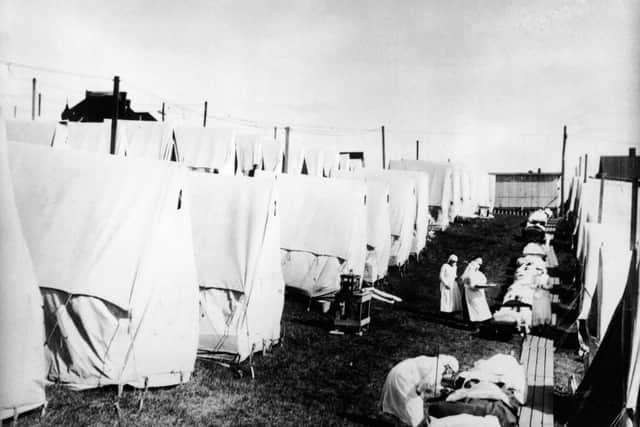What was the biggest pandemic in history? From Spanish flu to swine flu - what happened during pandemics of the past
"We have called every day for countries to take urgent and aggressive action. We have rung the alarm bell loud and clear," said Tedros Adhanom Ghebreyesus, the WHO chief as he first declared the pandemic on Wednesday 11 March 2020.
In the following six months, numerous comparisons between coronavirus and pandemics of the past have been made, including the historically significant Spanish Flu of 1918.
Advertisement
Hide AdAdvertisement
Hide AdBut when was the last pandemic, and what can we learn from outbreaks of the past?


Here's everything you need to know:
When was the last pandemic?
A viral outbreak could be categorised as a pandemic if it is markedly different from recently circulating strains, and if humans have little or no immunity to it, according to the UK’s Health and Safety Executive.
Before we get to what the 'last' pandemic was, you may be surprised to know that it could be argued there is actually a pandemic other than coronavirus ongoing right now.
Though HIV/AIDS is described as a “global epidemic” by the WHO, with infection rates as high as 25% in southern and eastern Africa, some medical experts continue to classify it as a pandemic.
The crisis was perhaps at its worst in 2006, when the HIV prevalence rate among pregnant women in South Africa was 29%.
Effective education about safer sexual practices and blood-borne infection precautions training have helped to slow down infection rates, but the disease's status remains.
Before coronavirus, the last pandemic to grip the world was that of the 2009 flu pandemic, more commonly known as "swine flu".
It is estimated that 11 – 21% of the global population contracted swine flu, though the fatality rate was relatively low, at about 0.01 - 0.08 per cent.
Advertisement
Hide AdAdvertisement
Hide AdBetween 150,000 and 575,000 people were thought to have died.
Previous pandemics in history
Pandemics are nothing new, and even before the mass transit of the world's population through air travel, poor hygiene technologies in even developed countries led to mass outbreaks of disease.
Cholera is one such disease, which has seen multiple pandemics throughout history. The first began in 1817 on the Indian subcontinent, spreading across India by 1820, and claiming the lives of 10,000 British troops stationed there.
Cholera's outbreak have mainly kept to the Indian subcontinent (between 1817 and 1860 it is estimated that 15 million persons died there), although there have been pandemics in both Europe and North America.
Of course, the most famous pandemic is that of the Black Plague, which between 1331 to 1353 killed an estimated 75 million people.
What happened with Spanish flu?
Spanish flu is perhaps the deadliest pandemic in relatively recent history. From 1918 to 1920 it infected 500 million people around the world, including people on remote Pacific islands and in the Arctic.
50 to 100 million people are thought to have died from the strain - that's more people than were killed in World War I - which had an unusually high mortality rate for young adults.
The pandemic is often used as a warning against underestimating Covid-19, and those campaigning for stricter lockdown restrictions often point to Spanish flu as an example of what could happen if governments get it wrong.
Advertisement
Hide AdAdvertisement
Hide AdThe 1918 virus was also ‘novel’ (a new virus never before seen), nobody had immunity to it and its spread through respiratory droplets made it highly infections, much like Covid-19.
The pandemic came in three waves: the spring of 1918, the autumn of 1918; and the winter and spring of 1919, according to the CDC.
The second wave was dramatically worse, with symptoms much more severe than were seen during the first wave – Spanish flu could kill patients within days or even hours.
As it seems more and more likely a second wave of coronavirus could be upon us, will it also be worse than the first?
